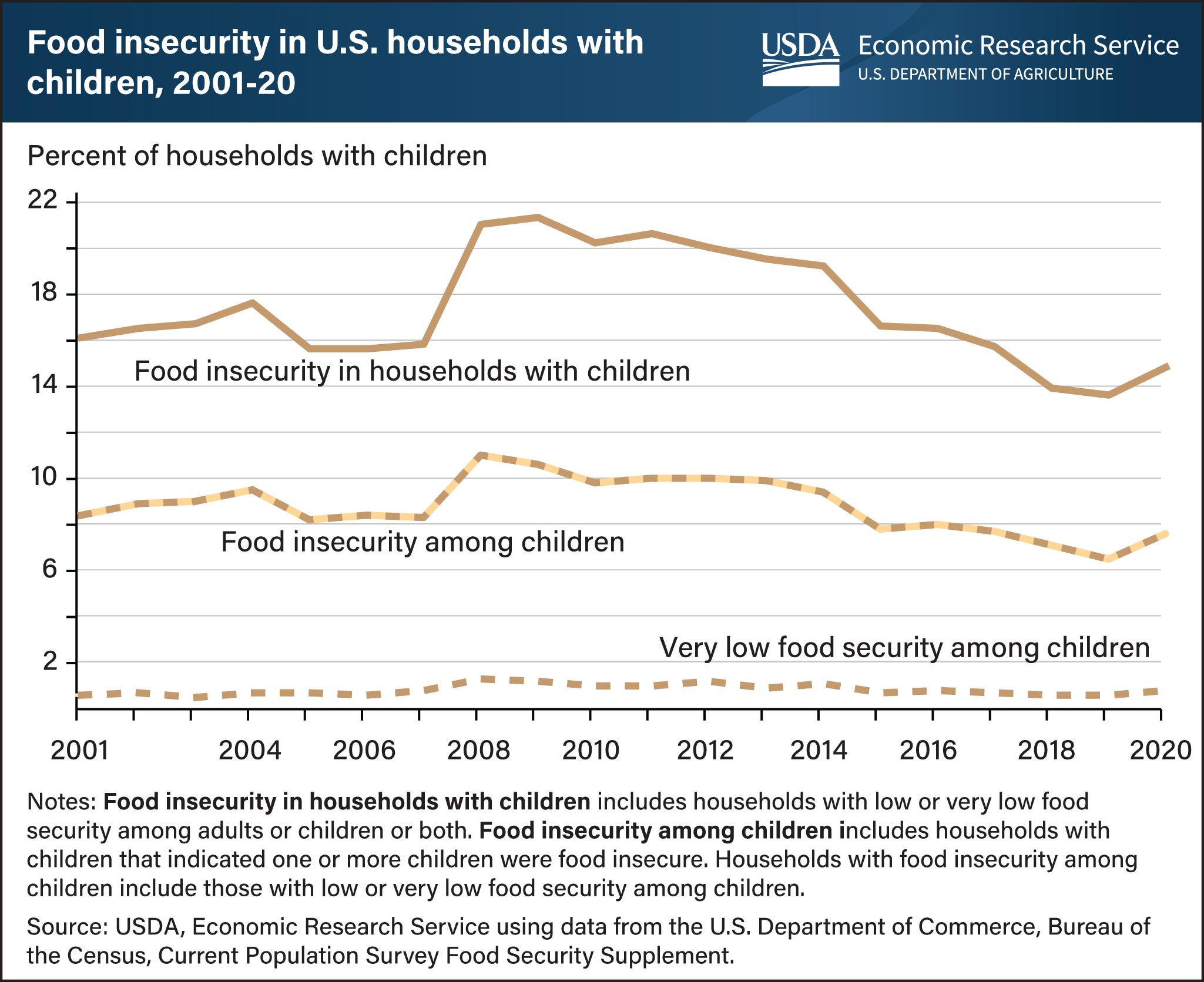Food insecurity among U.S. children increased in 2020
- by Alisha Coleman-Jensen
- 9/8/2021

The USDA, Economic Research Service (ERS) monitors the prevalence of food insecurity in U.S. households and breaks out data for households with children as well as children within these households. In 2020, the prevalence of food insecurity increased among U.S. households with children even though food insecurity for all households—those with and without children—remained about the same as the previous year. In 2020, 14.8 percent of households with children were food insecure, up from 13.6 percent in 2019. Children were food insecure in 7.6 percent of households with children in 2020, up from 6.5 percent in 2019. Households with food insecurity among children were classified as such because they were unable at times to provide adequate, nutritious food for their children. ERS researchers also found an increase in the most severe category of food insecurity—very low food security among children. In 2020, the share of households with children with very low food security among children was 0.8 percent, up from 0.6 percent in 2019. In that group, households reported that at times during the year children were hungry, skipped a meal, or did not eat for a whole day because there was not enough money for food. Monitoring children’s food security helps inform and improve USDA’s federally funded child nutrition programs. This chart appears in the ERS report, Household Food Security in the United States in 2020, released September 8, 2021.

